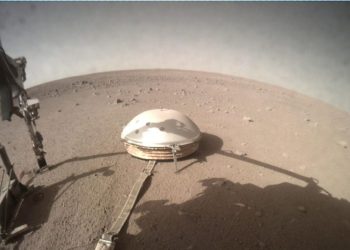Nearly 80 years after it vanished beneath the waves, the USS Stewart has been rediscovered on the Pacific Ocean floor, thanks to cutting-edge underwater drones operated by Ocean Infinity. This historic vessel, a 314-foot-long U.S. Navy destroyer, holds a unique place in World War II history and was thought to be lost forever—until now.
The USS Stewart, famously known as the “Ghost Ship of the Pacific,” was found resting upright in the Cordell Bank National Marine Sanctuary, about 3,500 feet below the surface. A trio of 20-foot-long drones located the wreck while conducting a routine mapping operation across the vast 1,286-square-mile sanctuary off the California coast.
A Remarkable Find
The rediscovery of the Stewart has been hailed as a landmark moment in ocean exploration. For decades, its exact location remained a mystery. The destroyer was lost in 1946, following a dramatic series of events that began when it was captured and re-used by the Japanese Navy during the war. After its final scuttling in the Pacific, numerous attempts were made to locate the wreck—but all efforts ended in failure until now.
“This is an extraordinary find, especially considering how well-preserved the Stewart remains after all these years,” said Maria Brown, superintendent of Cordell Bank and Greater Farallones National Marine Sanctuaries. “For a ship of this age, the level of preservation is almost unheard of. It’s like stepping back into a piece of history.”
The Story Behind the Ghost Ship
The USS Stewart’s journey is one of the more unusual tales in naval history. Originally sunk after sustaining heavy damage during battle, it was raised and repaired by Japanese forces, who then re-deployed it as part of their naval fleet. For Allied pilots, the sight of one of their own ships deep within enemy waters earned it the nickname “Ghost Ship of the Pacific.”
After Japan’s surrender, the Stewart was retrieved by the U.S. Navy, but its return to the U.S. was anything but smooth. Engine failure left the vessel stranded near Guam, where it had to be towed the rest of the way. In 1946, the Stewart was ceremonially sunk during naval target practice, disappearing into the deep Pacific. Although its final resting place was lost, Stewart’s legend lived on among naval historians and marine archaeologists.
A Fascinating Discovery
The successful rediscovery came about almost by accident. Ocean Infinity, which specializes in underwater exploration, was testing the capabilities of its autonomous drones when a suggestion was made to scan for the USS Stewart. Russ Matthews, president of the Air/Sea Heritage Foundation, had located the coordinates of the tugboat that had towed the Stewart to its final scuttling, sparking the idea. What would normally take weeks of search time was completed in mere hours, with the drones quickly identifying the wreck.
This remarkable find adds to Ocean Infinity’s growing list of accomplishments. The company had previously used its technology to locate other historic wrecks, such as the USS Nevada and Endurance. “We’re experiencing a significant shift in ocean discovery,” said Jim Delgado, a senior vice president at SEARCH, Inc., which partnered with Ocean Infinity on the project. “Technology is now allowing us to uncover pieces of history that were once thought to be lost forever.”
The discovery of the USS Stewart not only sheds light on a pivotal moment in World War II history, but it also demonstrates the potential for modern technology to explore the ocean’s depths. Beyond shipwrecks, these autonomous drones are being used to survey underwater landscapes for renewable energy projects like wind farms and map routes for undersea cables.











